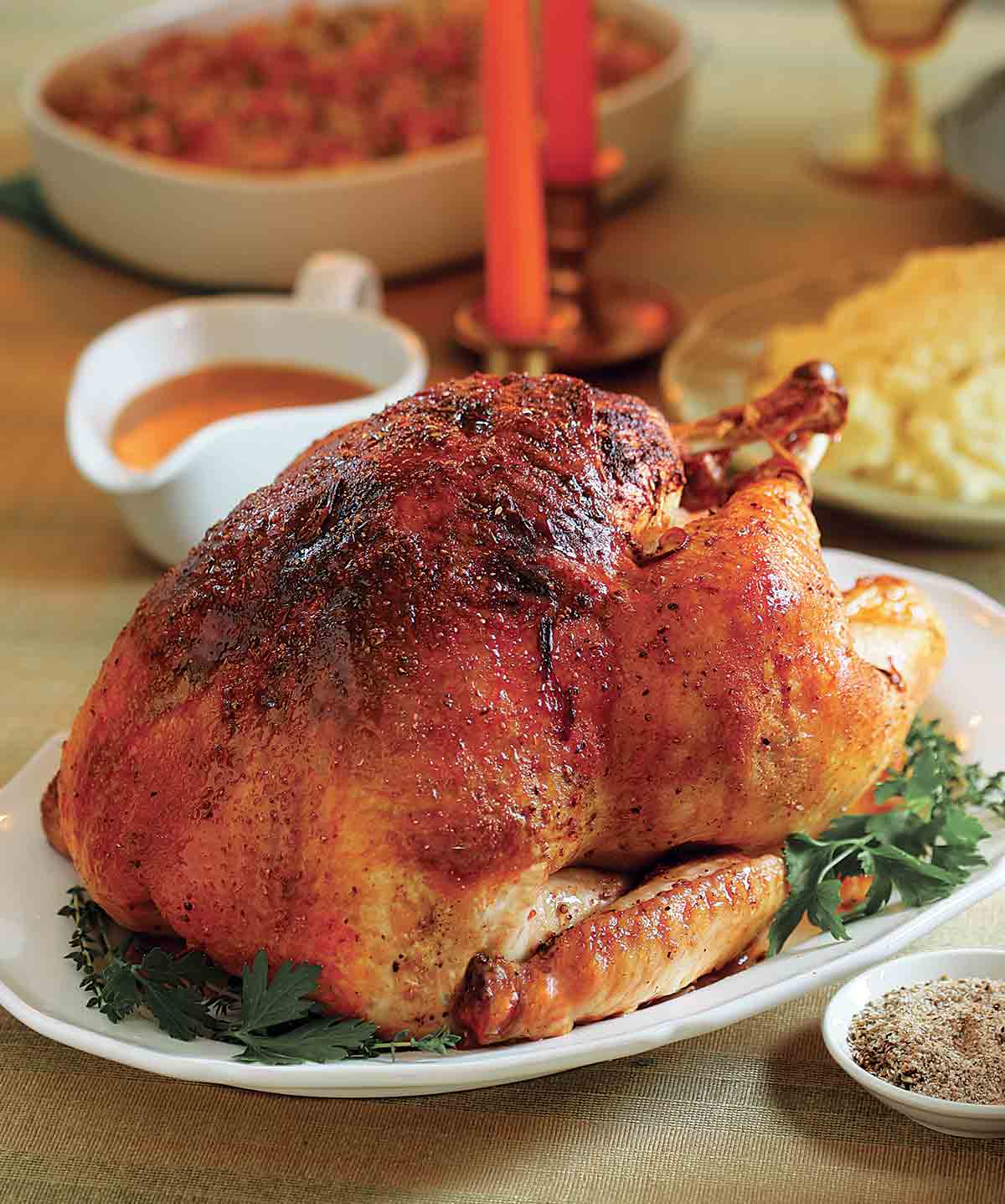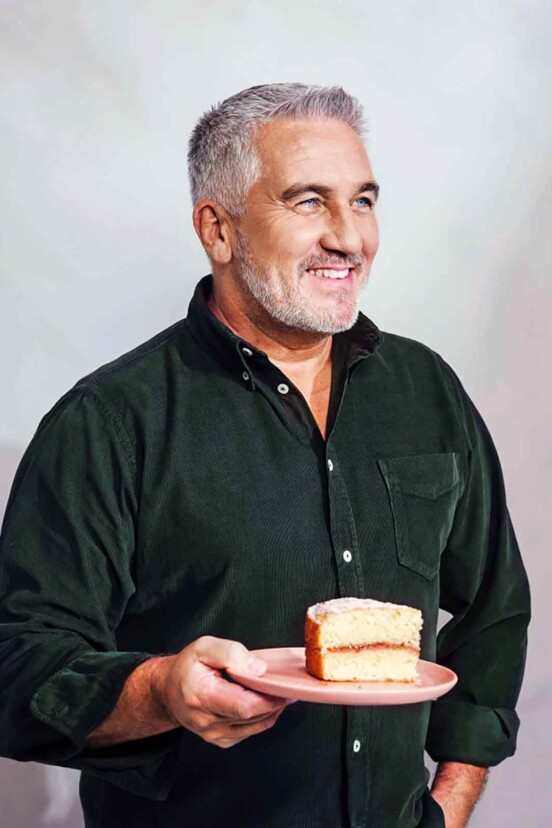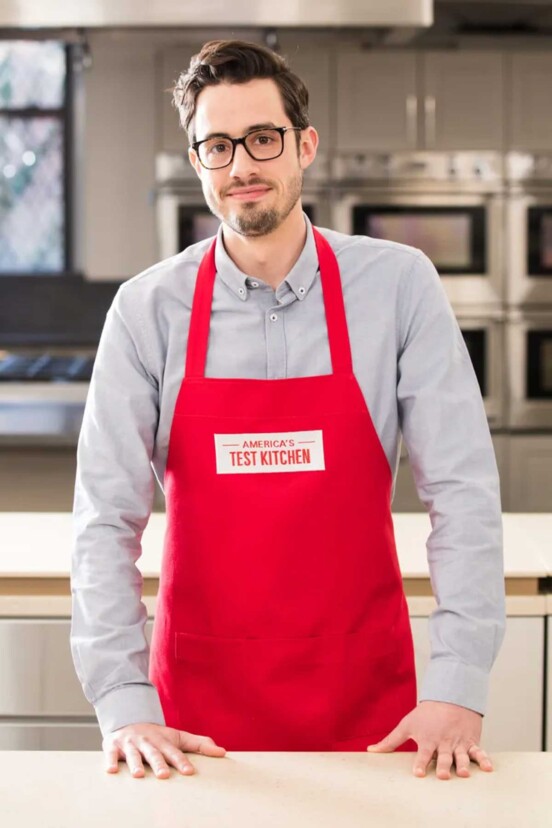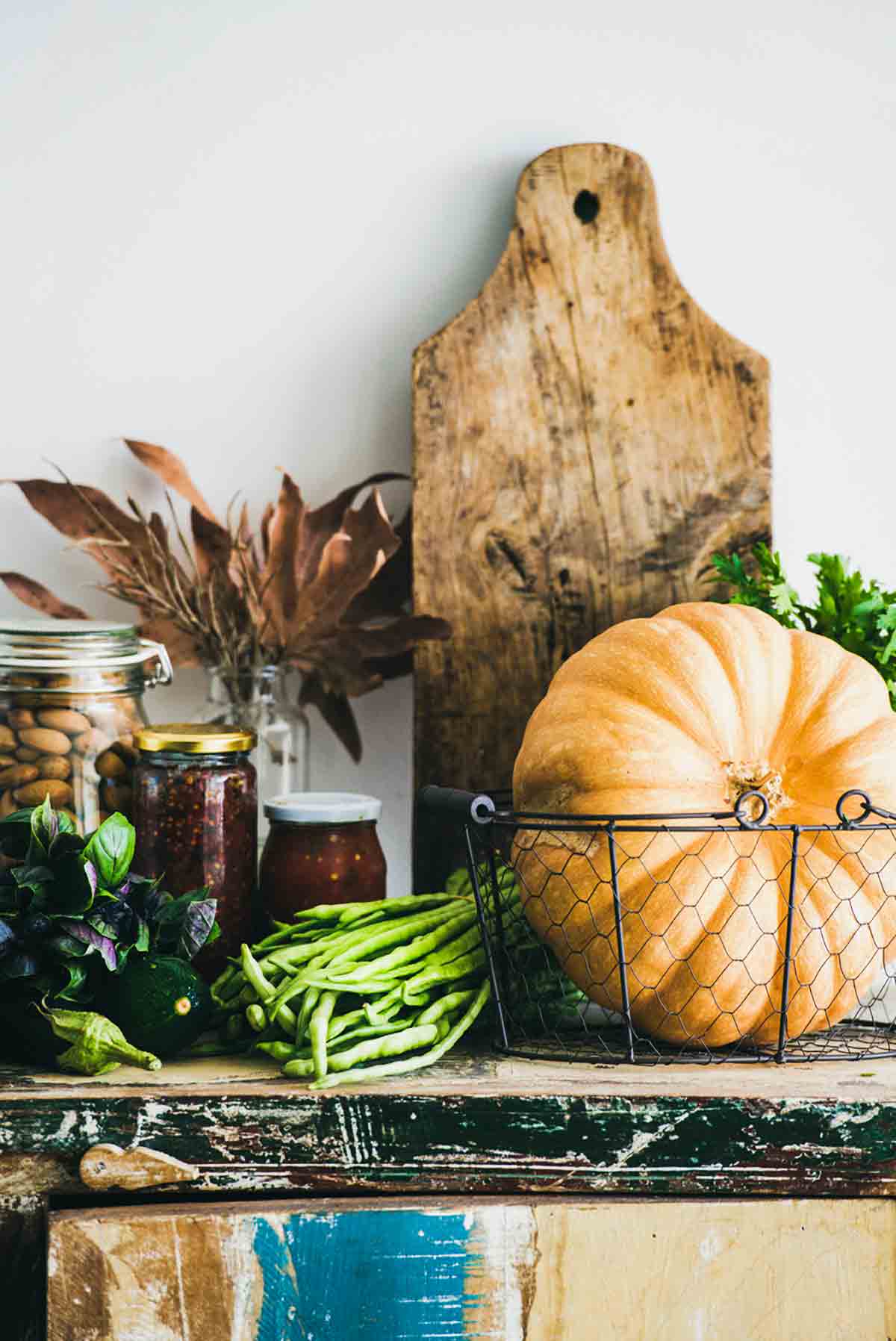
SUBSCRIBE ON Apple | Spotify | Sticher | Amazon | Google | iHeart | TuneIn
☞ If you like what you hear and want to help support us, even $1 will help! Thank you.
Contents
- Chat With Us
- Transcript
- Chef Tom Douglas answers listener questions
- Should I brine my turkey?
- Should a cook stuff the turkey?
- How can I manage the flow of cooking?
- What about vegetarians?
- What can I serve for a non-traditional Thanksgiving?
- Lynne Rossetto Kasper
- All-time best Thanksgiving disasters
- Asher Weintraub and his Menurkey
- Josh Wesson on wine for Thanksgiving
- John Bridges on table manners
- Kelly Hall-Tompkins on the power of music
- Thanksgiving recipes on LC
Chat With Us
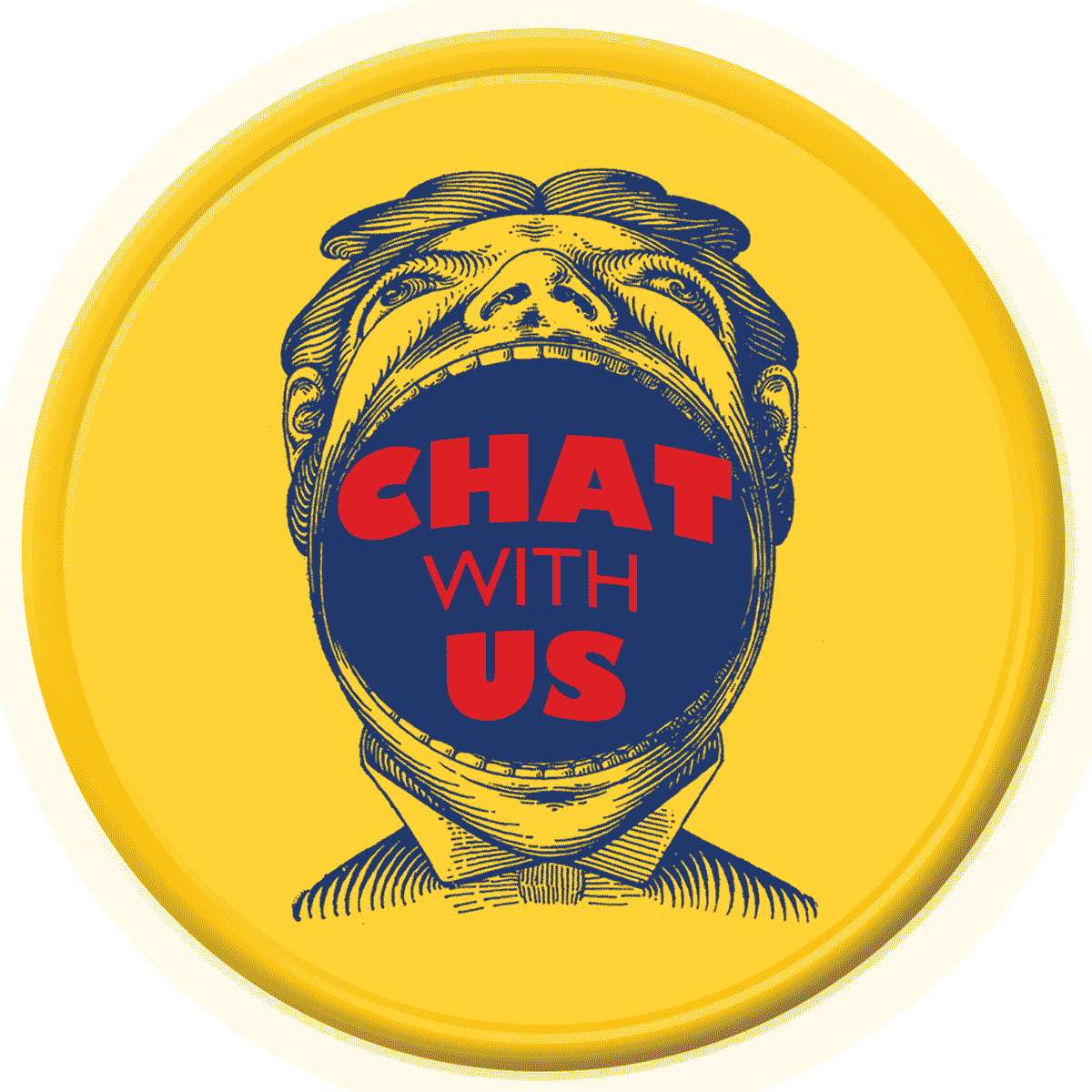
Have a cooking question, query, or quagmire you’d like Amy and David to answer? Click that big-mouth button to the right to leave us a recorded message. Just enter your name and email address, press record, and talk away. We’ll definitely get back to you. And who knows? Maybe you’ll be featured on the show!
Transcript
David Leite: Hello. This is David Leite, cohost of the podcast Talking With My Mouth Full. Today’s episode is what we call a “Mouth Full Favorite.” It’s our Thanksgiving special from years ago. Or, what Renee likes to call our equivalent of the Charlie Brown classic. The guests, topics, and advice still ring true. Renee, Adam, and I hope you enjoy it. And we all wish you a wonderful and safe holiday.
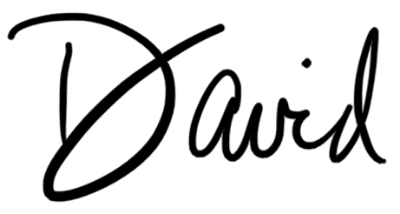
David: Renee, this is our first Thanksgiving together. Do you realize that?
Renee Schettler: I never really thought about it like that.
David: We’ve worked together for, what, four years?
Renee: Yeah.
David: This is our first year across the table for Thanksgiving.
Renee: Interesting. It does kind of feel like Thanksgiving because whenever we spend this much time together, I do feel like I need a drink.
David: Yeah. Well, it’s just like family, isn’t it? Argue and drinking, argue and drinking. So tell me. I really don’t know. What is it you like about Thanksgiving most?
Renee: I like the emphasis on people. I like the fact that E and I crowd out the rest of the world. Actually, our families are all far away, so we tend not to travel on Thanksgiving and it’s just the two of us. I really like that. It’s not the traditional turkey dinner.
David: What do you have?
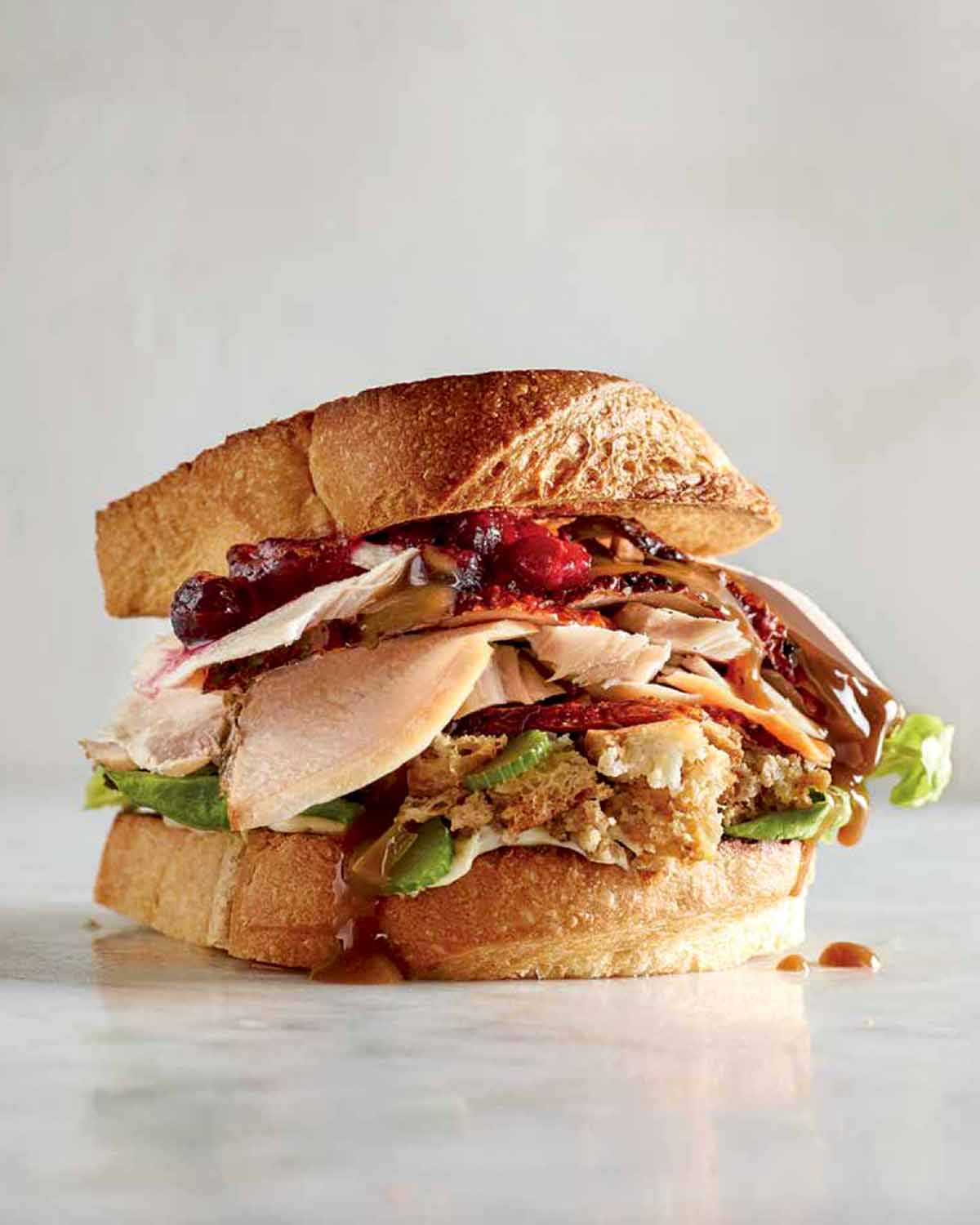
Renee: It varies from year to year. One year we made turkey sandwiches and grabbed some bottles of champagne and took my Jeep out to the beach. It was just the two of us and the waves and it was perfect.
David: That’s nice.
Renee: Last year we had Momofuku fried chicken.
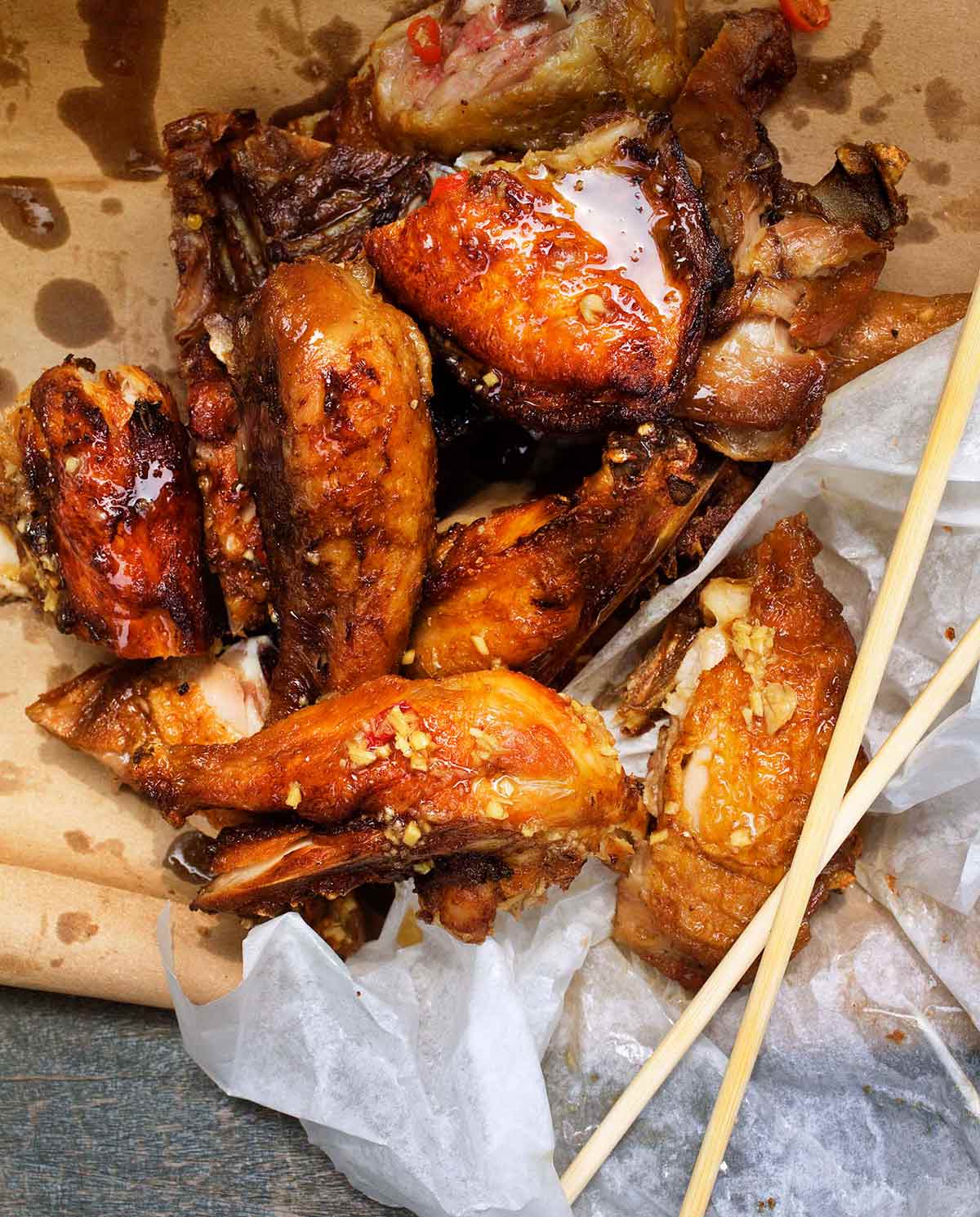
David: Out of sight.
Renee: Yeah. It was close to turkey, we thought, and we stood there in our kitchen and we ate that chicken right as it came out of the fryer. We had Champagne and candlelights. To me, it was perfect. I’m imagining that’s not how you and the one celebrate Thanksgiving, though.
David: Oh no, no, no.
Renee: What do you like most about Thanksgiving?
David: What do I like most about Thanksgiving? I like people fawning over my food. Falling all over the buffet table. That’s what I like.
Renee: Do they actually fawn?
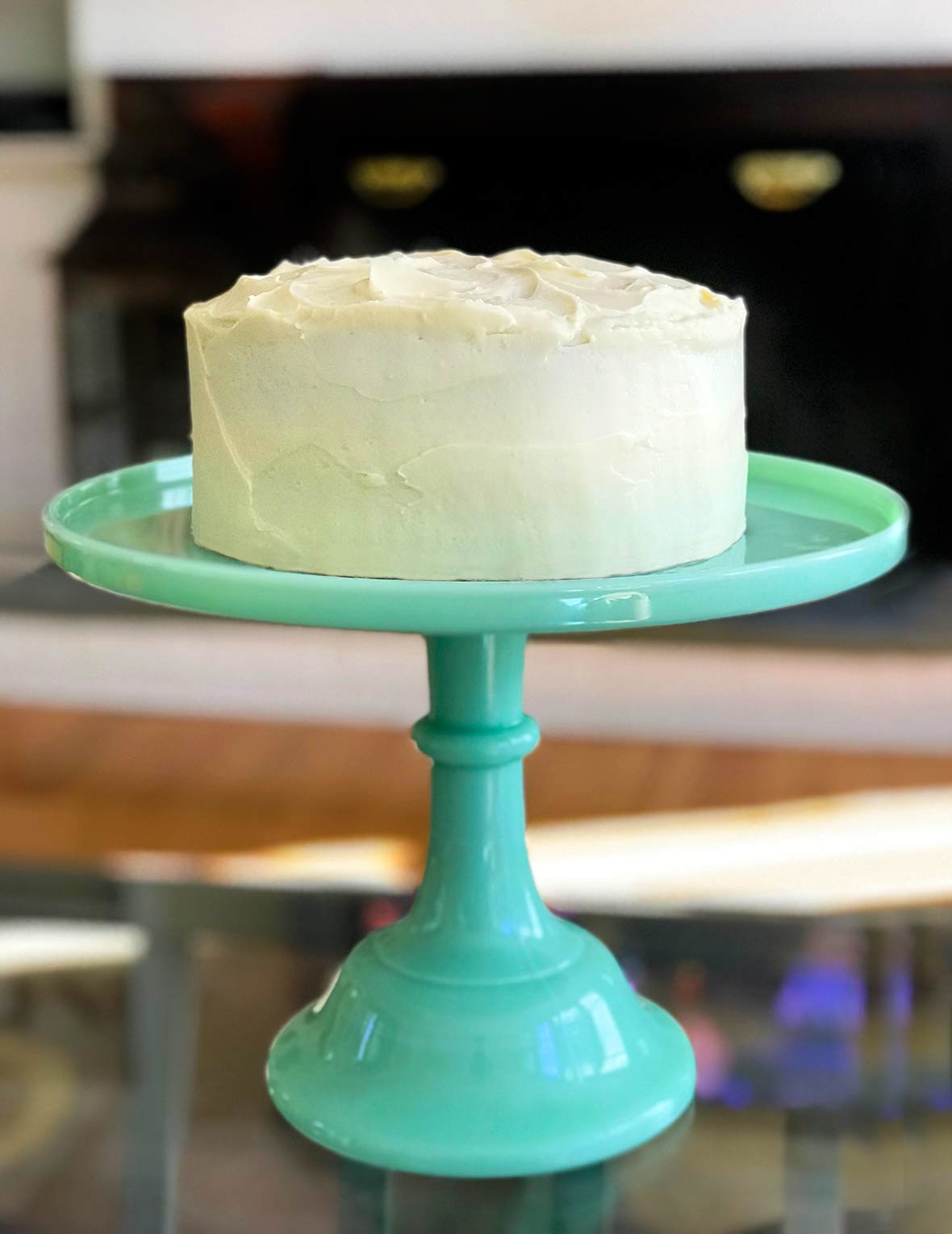
David: They do. They do. They fawn. There’s the pumpkin cake with maple cream cheese frosting, which is huge.
Renee: Readers always rave about that, actually.
David: There is the celery root and potato gratin, which is fantastic. There’s the two Portuguese stuffings, one with bread, one with potato. You know what happens? Six PM, the curtain rises, and there am I and everybody–
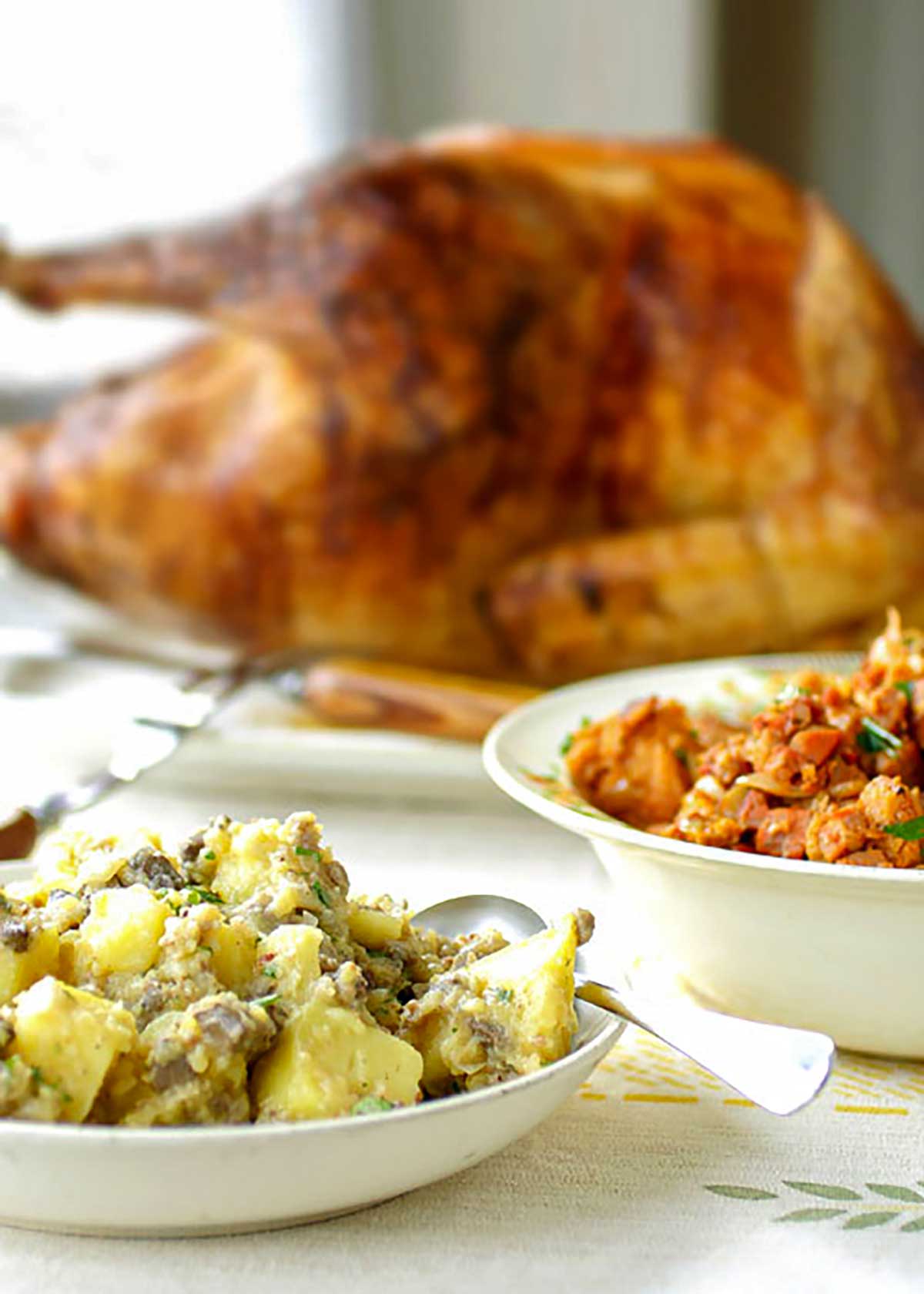
Renee: It’s the David Show…
David: Yeah. That is not the first time I’ve heard that. Everybody comes in. But what people do not know, this is the secret. People do not know how freaked out I am inside. The whole day I’m freaked out.
Renee: Why?
David: You think about it. How many times a year do you make turkey? I make it once a year. So I get turkey amnesia. It’s just a very anxious-provoking day for me.
Renee: Well, I think a lot of people feel like that.
David: I agree.
Renee: They forget that practice makes perfect and that they can’t expect perfection out of something that you don’t do that often.
David: Yes. That is why we have put together this Thanksgiving special where we’ve got lots of experts telling you everything you need to know. We have got Tom Douglas with some outrageous menu ideas.
Renee: Yeah. His ideas are great.
David: Yes. Then there’s Lynne Rossetto Kasper talking about some pretty wild Thanksgiving disasters and-
Renee: And how to learn not to let them happen to you.
David: … how to avoid them. We have John Bridges, our expert on etiquette.
Renee: I love John Bridges.
David: Boy, I tell you. He is very funny. And some other folks that will help you make maybe not the perfect Thanksgiving, but one that will be extraordinarily memorable. My name is David Leite and I’m the publisher of Leite’s Culinaria.
Renee: I’m Renee Schettler Rossi, its Editor-in-Chief.
Renee: (singing)
Chef Tom Douglas answers listener questions
David: We’re taking off our host hats for this segment and we’re putting on our EMT hats, which stands for emergency meal technician. This time of year we are inundated with emails and phone calls, and this year we’ve tapped three-time James Beard Award-winning chef, restaurateur, and cookbook author, Tom Douglas to explain it all for you.
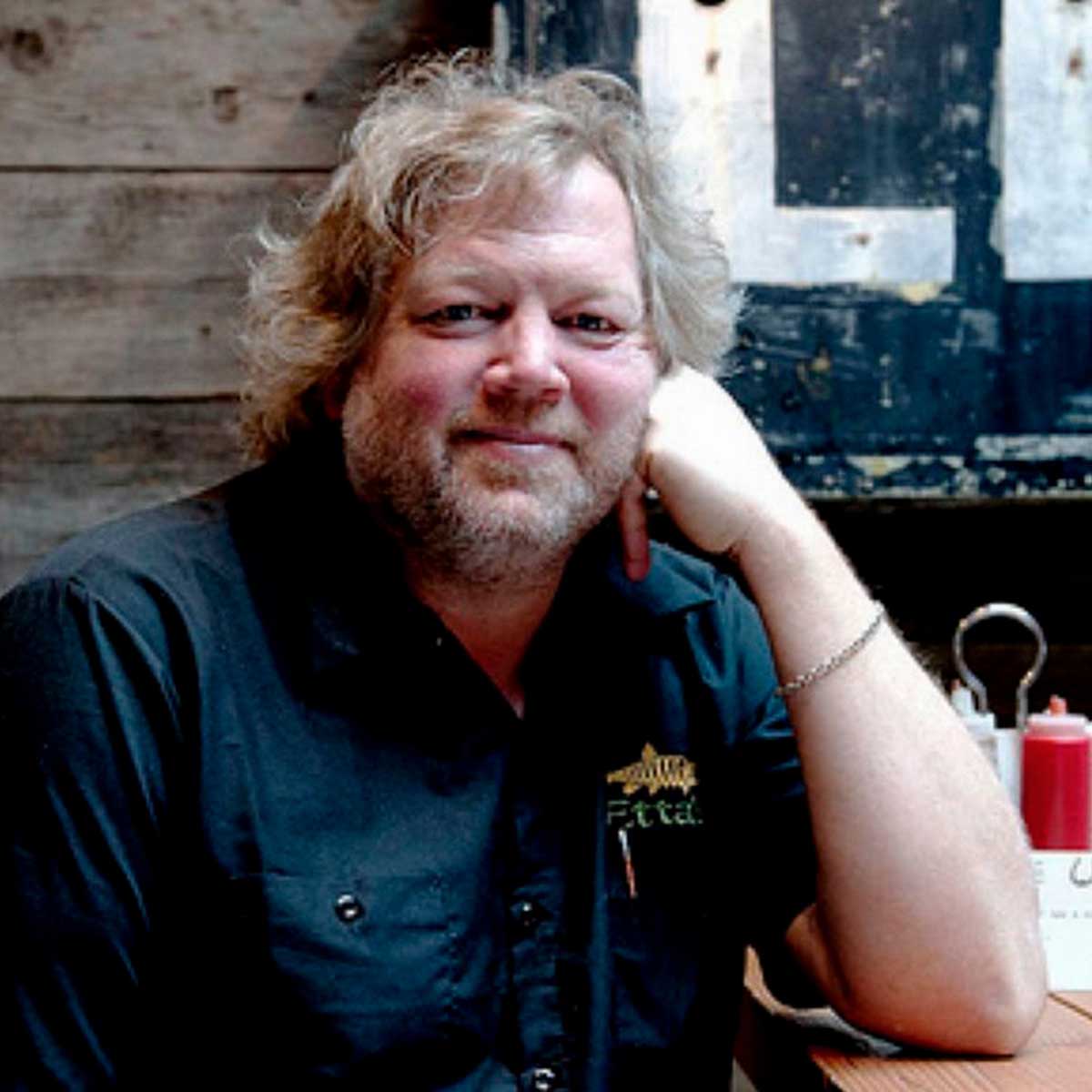
Renee: Tom, welcome.
David: Welcome, Tom.
Tom Douglas: Thank you so much. Happy Thanksgiving.
David: You too.
Renee: Happy Thanksgiving.
Should I brine my turkey?
David: We have questions from our readers, as I said. We’ll start right off with a very important one. This is from Patty. And Patty said, “To brine or not to brine, that is the question.”
Tom: Brine. I think that it’s really fun. I think anytime you can do something as simple as brining, I think it’s great fun as a cook to try something new. But then on top of the brining, I think…the brining, if you do it overnight it’s going to give you a little bit crispier skin because it’s going to take some moisture away. But most people don’t use their barbecue grill for turkey because they’re nervous or it’s cold out or it’s snowing or whatever. But my trick on turkey to give it that smokiness is to fill the cavity with maybe half to three-quarters of a cup of dark roasted coffee beans.
David: Oh wow.
Tom: You put that in. Everyone loves the smell of coffee. The aroma of the beans as the turkey heats up, starts to fill your oven. The drippings kind of wash through the beans and go into your gravy.
Renee: Brilliant.
Tom: So you got this kind of smoky flavor. It’s not smoky like a barbecue smoke, but it’s smoky like a brown malt.
David: I am getting so hungry already.
Renee: Wow.
Tom: Yeah. That you might use in a dark beer. I just think it’s a great way to infuse the turkey with flavor. So yes, brine. Use some good fennel seed. Only use fresh spices. But then take it even one step further. That simple little trick right there will give you an aromatic nature to your turkey that most people never try.
Renee: Perfect.
David: Great idea.
Should a cook stuff the turkey?
Renee: So Tom, you’ve actually already kind of answered our second question, which comes from Rita, one of our followers on Facebook. She asks if you put the stuffing in the bird or not. I’m assuming, since there’s coffee beans in your bird …
Tom: Yeah. I have some pretty serious feelings about that. Mostly because I love texture in my meal. Thanksgiving, if you do it the traditional way ends up being a big blob on the plate: mashed potatoes, soft sweet potatoes, turkey, gravy, stuffing from inside the bird. It’s just a big old blob-a-blob. So I’ll do my stuffing in a casserole and let the edges get crispy, brown, and golden and crunchy. I’ll do the turkey on its own, letting it be what it needs to be along with the gravy.
Tom: I’ll even, on the turkey, I’ll put onions underneath the turkey and let them caramelize during the roasting process so that that’s the basis of the color of your gravy. So much turkey gravy is kind of creamy, whitish-gray, kind of washed-out blah. So a rich, dark brown gravy I think is really appetizing at the Thanksgiving meal.
David: Well, on the site, we have your recipe for the paprika and fennel turkey with the onion gravy.
Tom: Okay.
Renee: Fabulous.
David: Absolutely. Our testers went absolutely crazy. As a matter of fact, Karen Depp said, “This turkey recipe is the one to use if you want a beautiful bird that will steal the dinner show award.”
Tom: Whoa. I like that.
How can I manage the flow of cooking?
David: Another one is actually, I think this is a good question, and a lot of people have problems with it. This is from Miriam and she says, “What are the tips for managing the flow of cooking?”
Tom: Well, there’s a couple of things I would say to that. Prep, prep, prep. The other thing is, think about who your guest list is. You’re not there to be the servant of the house. You’re there to help get dinner on the table for everyone’s traditional celebration. Engage your guests in opportunities to help cook. When my niece and nephew come over, they’re going to be on the salad. When this niece and nephew comes over, they’re going to be on the butternut squash soup.
Tom: We’re going to take care of the brining of the turkey and get it in the oven and do that long roasting process. But my friends, Pam and Mike, they can take over the scalloped potatoes. Someone else can do the spiced peaches.
Renee: Love it.
Tom: Yeah. These are all ways to throw a big dinner and not have you not be able to be back on your feet till after New Year’s because it’s such a difficult scenario. So I think that, for any big dinner, is to engage. People love being in the kitchen. Where do they hang out the most? The kitchen.
David: Always the kitchen.
Renee: Yeah. Just give them specific–
Tom: Yeah. Engage them in the process.
Renee: Yeah. Okay. So the inevitable question.
David: Yeah. Here we go.
What about vegetarians?
Renee: This is from Lori, “What menu or recipes would you prepare for a vegetarian Thanksgiving?”
Tom: Well, in our company, we actually have a Chief Vegetable Officer.
Renee: Nice.
Tom: We are all about trying to get a better presence of vegetables on the plate, eating the rainbow, so to speak, and lowering the protein ounces at the center of the plate, and just changing the process. From a vegetable point of view, I would do just that. I would instead of trying to say…chefs used to be if you asked for a vegetarian meal in the restaurant, “We’ll make you pasta primavera.” That’s just a mix of vegetables with some pasta and some butter and white wine.
Tom: Instead, think about each vegetable separately. So let’s just say you have beautiful carrots. Let’s do carrots roasted in the oven with tarragon and maybe a little rosehip yogurt. Now that’s one dish. Let’s take some cauliflower, break it up, roast it in the oven, let’s make a cauliflower with golden raisin and black cardamom. Let’s focus on the cauliflower. So now that’s a dish. Just like a turkey dinner where you’re scooping up mashed potatoes, you’re scooping up green beans, you’re putting on the turkey. Instead, you’re just doing it with vegetables, but the vegetables are all competent in their own right.
Renee: I love that.
Tom: I think that that makes it very interesting. It varies the flavors and textures and temperatures on your plate. As a meat eater, I would never quibble with that. I love that kind of dinner.
Renee: I love that approach because that pleases everybody at the table because if there’s a turkey in the center, then the vegetarians around the table can just omit that.
David: Exactly. And then if you love turkey, you also can have those incredibly competent vegetables. I like that, competent vegetables.
Tom: Yeah. It’s well thought-out. A vegetarian feels like they’ve been considered and, as a meat-eater, I would eat any of those things.
David: Exactly.
Renee: Totally.
David: So it’s a win-win.
Tom: Yep.
What can I serve for a non-traditional Thanksgiving?
David: Now, Cecelia has a question I think is a good one. “If you decided to go non-traditional, meaning that there’s no turkey and the usual suspects, what would you serve?” This doesn’t have to be vegetarian, clearly, it can be meat. What would you do?
Tom: Well, I would definitely do a whole king salmon. That’s something that we do at the same time in our house every year. We have a whole roasted fish that’s stuffed with slices of sweet fennel, onions, the fennel fronds. We tie it up. I put it on the charcoal grill. Oftentimes, it’s so big the tail and head are hanging out the edges of the grill. And then I just simply serve it to the center of the table with a little compound butter made out of fennel pollen and toasted fennel seeds, fresh lemon juice, and lemon zest.
Tom: I just think it’s a beautiful, light, delicious way to celebrate Thanksgiving and probably, in this particular part of the country, more typical than the turkey itself. I serve both at Thanksgiving, but a salmon really has kind of that same wow factor that a turkey does when it comes out of the oven and people all gather around and look at the beautiful bronze bird.
Renee: Stunning.
David: Well, Tom, that is all incredible advice and we want to thank you so much for stopping by with us. We want to wish you a very, very happy Thanksgiving.
Tom: Same to you and to all your lovely listeners.
Renee: Tom Douglas is the chef and owner of countless—well, okay, maybe not countless, maybe a dozen or so—restaurants in the Seattle area. He’s also the author of Tom Douglas’ Seattle Kitchen, Tom’s Big Dinners, and The Dahlia Bakery Cookbook.
Lynne Rossetto Kasper
David: Renee, did you know that the NIH has conducted a survey that said more anti-anxiety drugs were taken on Thanksgiving morning than any other day during the year? Did you know that?
Renee: I did not know that, although somehow it just doesn’t surprise me.
David: I’m lying. I’m lying. But it should be. No, it should be the case. Think about it, how anxious people get. I freak out on Thanksgiving morning.
Renee: Well, about the family coming over or about the cooking?
David: No, about the cooking part. That’s the reason why we have invited the doyenne of disasters of the Thanksgiving kind, Lynne Rossetto Kasper, who for more than a decade has heard every disaster humanly possible on a radio program, The Splendid Table’s Thanksgiving morning broadcast, Turkey Confidential.

Renee: Lynne, what a pleasure to have you here.
Lynne Rossetto Kasper: It’s a pleasure to be with you two.
All-time best Thanksgiving disasters
David: Hi Lynne. Tell us, what are some of the biggest disasters that you’ve heard on the show?
Lynne: Well, I think the all-time winner, and I hate to laugh about it because I’m an animal lover and I empathize with the person who it happened to, but we got a call from a woman in Florida who explained that she had everything organized. The hors d’oeuvres were out on the coffee table. And the turkey was in the oven. She finally was going to go and take a shower. She has two little kids. She told them to make sure the dog was tied up because they had I think a French bulldog or whatever and that if somebody rang the doorbell, the dog would go crazy, so tie it up.
Lynne: So the two little kids tied it up to the oven door handle. The doorbell rang and the dog got so excited, it ripped the door off of the oven and then proceeded to run around the house crashing into things. You can imagine how terrified this animal was. But at the same time, it was a glass coffee table. It goes on. I think that probably ranks number one.
David: Oh my gosh.
Lynne: That would be, I think, the all-time worst disaster and one that had a humorous side to it. But I think that dog would probably need counseling.
Renee: I think so, too.
David: How was the turkey? Did she ever say how the turkey turned out?
Lynne: I don’t think she was really…
Renee: Thinking about the turkey.
Lynne: … focusing on the turkey for a long time.
Renee: Well, that definitely takes the cake for the most unique turkey situation. I’m sure you hear a lot of the same type of disasters over and over and over. Is there one really basic thing that you think people…
Lynne: I think one of the basics is the turkey is an ice cube.
David: Yes. We hear that.
Lynne: This is a tough one because the fastest and, yet, safest way to defrost a turkey—and they’re usually large, you can’t get them in the microwave, and even if you do, you’re still going to have a lovely ice ball in the very center of the bird. It’s the idea of putting them in the sink. You can even put them in a sink of hot water, if you’re really crazy about it to get it done. But I always wonder if one of the things we should have on hand, just to be on the safe side, is a buzzsaw or one of those things that they carve trees with, the hand thing, because if you can get that thing cut up in half even, then you can defrost it pretty quickly.
Lynne: But the other thing is to think about as you get it defrosted, you start cutting along the back of that turkey. As soon as you can, get two strong people. You may be one of them and you start prying that bird out so that it’s butterflied.
David: Right. Well, yes, that would cook very fast. Yes.
Lynne: Yeah. Yeah.
David: Defrost very fast, yes.
Lynne: And then of course, the second disaster is somebody took the turkey out yesterday afternoon and left it on a counter where nobody saw it and can we make the turkey? Yeah. You know the answer to that one.
David: Yeah, yeah. That’s a big no.
Lynne: Yeah. There have been several of these, but there was one very funny one where this woman was just devastated. I said, “But look, there’s probably some markets open. You can do a turkey breast. You can butterfly it. You can do everything you want to do with it.”
Renee: Perfect.
Lynne: I mean you could cook that thing in an hour. You can make scallops, whatever. She said, “But look, our family’s really healthy. Can I bake the bird?”
David: So healthy, she leaves it out overnight.
Renee: Oh my God. That’s really funny.
Lynne: Yeah. But she figured out. What would it hurt once?
David: Exactly.
Renee: I think one of the reasons people experience so much angst when they’re cooking Thanksgiving dinner is there is so much to be done and only one oven.
David: Well, I have two and I still freak out.
Renee: Yeah, you freak out about everything.
Lynne: That’s so good to hear.
David: It’s true.
Lynne: So reassuring.
Renee: Lynne, have you ever heard from people who have tried to make turkey in other ways to save oven space?
Lynne: Oh yeah. Really, I think one of the most original ways of cooking a turkey we’ve ever heard was a roofer who called in and said, “You people with your ovens.”
David: I’m already laughing.
Lynne: I mean you know what’s coming, right?
David: No, I don’t.
Lynne: All right. This involved a bucket, tar, and a great deal of tinfoil or aluminum foil. What he explained was what he did is he took a large bucket, quarter-filled it with tar, seasoned the bird, wrapped it up in many layers of tinfoil, put it in the bucket, and surrounded it with hot tar.
Renee: Wow.
Lynne: Now, it’s wasn’t a huge turkey. It was probably a modest-sized turkey.
Renee: A tar baby.
David: It really is a tar baby turkey.
Lynne: Well, it’s a tar baby turkey. But the other thing is, think about this, we bury pigs to cook.
David: Yes, we do. Yes.
Renee: That’s true.
Lynne: Right? I mean you can cook hot stones and you put the dirt on and the clay and whatever it is, the leaves.
David: Yeah, that’s very true.
Lynne: Why not a tar bucket?
Renee: Why not?
Lynne: I think for the average cook, yeah, I mean the tar is a little hard to get a hold of.
David: Exactly. And getting it up to the temperature that you need.
Renee: Maybe some hot coals. I could see doing that if you’ve got a fire pit in your backyard.
David: Oh God. This is–
Lynne: Absolutely. If you’ve got a grill on your fire escape and you hope it is not 20 below with 40 mile-an-hour gale-force winds, you can grill. The other thing that’s really neat to know is, if you are not into presenting the whole bird at the table with the ta-dah moment, what you can do is you can cut up that bird. You can roast it, and then you can tuck it back in the oven for a reheat or you can just roast it. Remember, the bird has a 30-minute rest period.
David: That’s true. It’s a long one, yeah.
Lynne: Yeah. If you’ve been strategic, you’ve done everything. No recipe on that menu should end with “Serve immediately.”
Renee: Exactly.
David: Yes.
Lynne: Because you’re insane. That’s suicide. So the idea is you slip everything into the oven and then the bird’s sitting over there in the corner getting its 30-minute rest so it’ll be juicy, tender, and wonderful.
David: That’s wonderful. Lynne, thank you very much. I hope people who are listening at home are getting a good chuckle and also some good tips from what you said.
Lynne: I hope so too.
Renee: Thanks so much, Lynne.
Lynne: You’re welcome. Have a great holiday.
David: You too.
Renee: Lynne Rossetto Kasper is the host of the award-winning Public Radio program, The Splendid Table, and the author of multiple best-selling books including, but not limited to, The Splendid Table–
David: I have.
Renee: Me too. As well as The Splendid Table’s How to Eat Supper, and How to Eat Weekends.
David: Got that one.
Renee: Those last one were co-authored with founding producer, Sally Swift. Lynne is also just charming as can be.
Asher Weintraub and his Menurkey
David: And now for something completely different and inspirational. Our next guest, Asher Weintraub, a fourth-grader in PS 87 in Manhattan, realized that Thanksgiving and Hanukkah overlap this year and had an ingenious idea. He raised almost $49,000 on Kickstarter for his product, a Menurkey.
Renee: Asher, thank you so much for being here with us and for bringing a Menurkey.
David: I know.
Renee: It just kind of rolls off the tongue, Menurkey.
David: Menurkey. So why don’t you tell all of our listeners what a Menurkey is?
Asher Weintraub: It’s a menorah in the shape of a turkey.
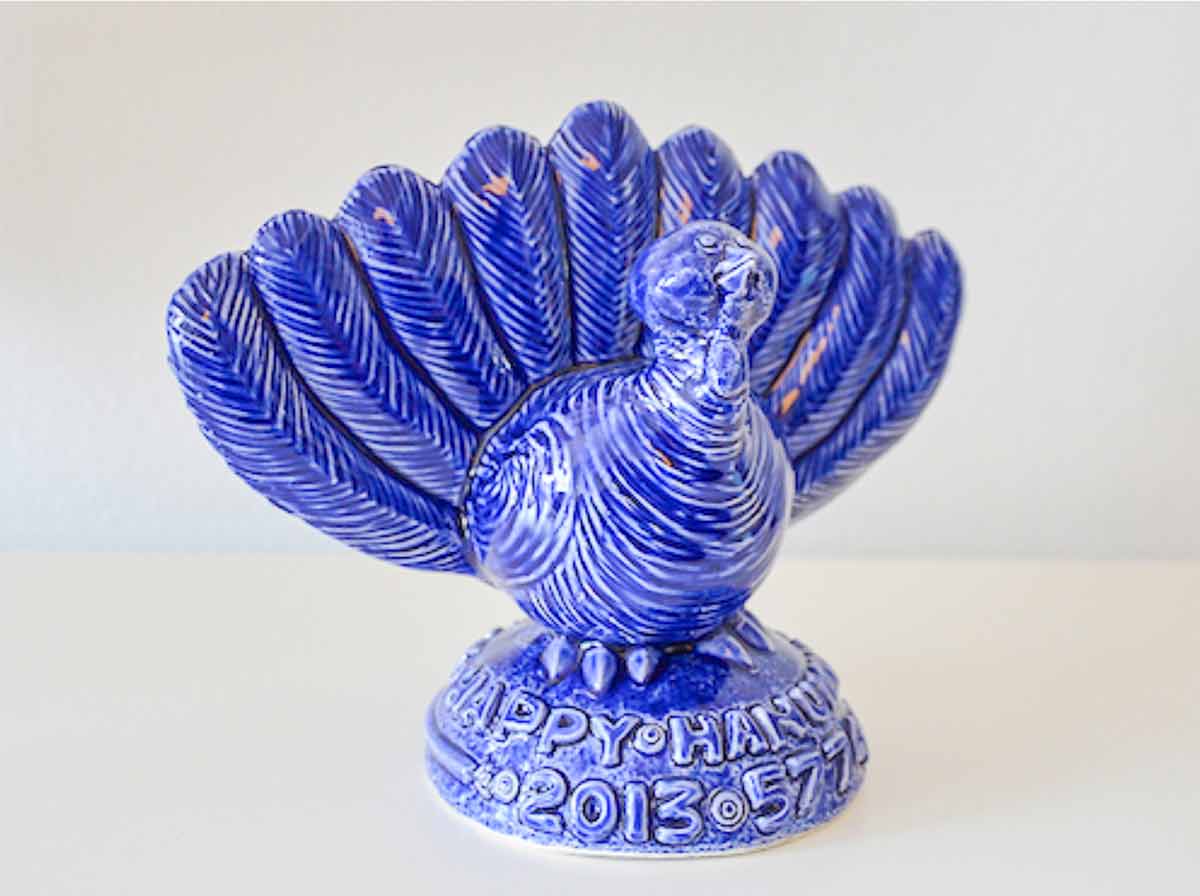
David: Where’d you get this idea?
Asher: We were driving in a car back from Florida and Mommy told us that Hanukkah and Thanksgiving were on the same day as she was looking at her calendar on her phone. I thought, “What if there was a menorah in the shape of a turkey?”
Renee: Brilliant.
David: And that’s how it started.
Renee: What I’m impressed with is you not only had the idea, but you made it happen. It’s one thing to think about a Menurkey, but it’s another to actually create it. How did that happen?
Asher: Well, we just forgot about it for a while, but eventually we remembered and Daddy told me to create a version that I thought it would look like out of clay.
Renee: Great idea.
Asher: So we got some clay and I created one. It didn’t look anything like that, but-
Renee: Well, it’s a start. It’s a start.
Asher: And then we got it 3D-printed, like a prototype, at MakerBot. And then we found–
David: Did you create the 3D version of that yourself?
Asher: Mm-hmm.
David: You did?
Renee: On a computer program?
Asher: Yeah.
David: I can barely print a document.
Renee: I know.
David: And he’s printing 3D.
Renee: Wow.
David: So you had it made as a 3D prototype.
Asher: Mm-hmm.
David: What happened next?
Asher: Then we found a ceramist and she started making ceramic ones for us. And then we found a plaster place and then it just sort of-
David: Took off?
Asher: Yeah.
David: How can people buy their own Menurkey?
Asher: We’re selling them online, but The Jewish Museum is the exclusive retailer in Manhattan.
David: Excellent.
Renee: We’ll be keeping an eye on you. We can’t wait to hear what you come up with next.
David: Asher, want to thank you very much for coming on the show. It was a pleasure and actually an honor to meet you and see your creativity.
Renee: It really is. Thank you.
Asher: Thank you.
Asher: (singing)
Josh Wesson on wine for Thanksgiving
Renee: Who decides what to pour at the Thanksgiving table? You or the one?
David: Almost always the one.
Renee: I figured. You don’t talk about wine much.
David: No, I’m more the food guy.
Renee: That makes sense. In terms of Thanksgiving, as you know, E and I don’t really do the traditional meal. So we just do something crazy and then grab a couple bottles of our favorite bubbles and we’re happy.
David: Yeah, you guys are the boozers and we’re the gluttons.
Renee: Yeah, exactly. Well, so that’s exactly why neither one of us should be recommending wines for the Thanksgiving table.
David: Very good point.
Renee: Here to help is Josh Wesson, award-winning former sommelier turned wine drinker advocate. He’s all about real wines for real people. I mean we’re talking less than $20 a bottle for outrageous wines.
David: Well, that’s excellent.
Renee: He founded Best Cellars, which became famous for stocking wine not by country or by grape, but by actual things that can help you, like soft, juicy, and luscious wines.
David: Adjectives.
Renee: Adjectives. Thank you. That’s the word I was looking for. I’m going to stop talking and let Josh do some talking now.
David: Welcome, Josh.

Josh Wesson: It’s good to be here. Taste, the final frontier. Who knew?
Renee: We’ve got a lot of people listening, I think, who are really anxious about what wine to serve at Thanksgiving. I’m just kind of wondering, what is it that makes Thanksgiving so tricky? I mean is it the turkey? Is it the side dishes? Is it everything on one plate?
Josh: I think at Thanksgiving we tend to channel this collective amnesia because, of course, Thanksgiving happens every year.
David: Exactly.
Josh: We know it’s going to happen every year. We know exactly when it’s going to happen and we know who’s coming to Thanksgiving and what they want to eat. We know what we have to cook and yet we forget everything about how to cook it. I mean I can’t tell you how many times I’ve forgotten how to roast a turkey.
Renee: Well, actually, we’ll help you roast your turkey if you help us pick out what wine.
David: Wines for our turkey.
Josh: Well, I mean the angst that you channel in trying to figure out how to cook Brussels sprouts and turkey and stuffing over and over again in this kind of shared world of Groundhog Day where we wake up and we just have to repeat ourselves over and over again every Thanksgiving, same thing happens with wine. But I’m here. I’m holding the gifts from the temple mount. These are not rules that tell you what to have. I’m here to say, “Forget about worrying. Forget about the anxiety. There should be no anxiety because you can almost do no harm when it comes to serving wine with Thanksgiving dinner.”
Josh: There are some things that are better than other things and there’s some things that you should avoid. We’ll go over that in due course here. But the bottom line is you can’t do anything terribly wrong because it’s not a holiday that demands pointless precision when it comes to matching. It couldn’t, because think about your Thanksgiving dinner. It’s a kaleidoscope of textures and tastes and flavors and smells and an even bigger kaleidoscope of personalities and wants and desires.
Renee: I’ll say.
Josh: You’ve got this wild riot of people and plates and foods on the table that would be impossible. Even Boutros Boutros-Ghali himself couldn’t make peace with all the stuff that’s before him. I mean it really makes bringing together the Arabs and the Israelis a piece of cake compared to trying to make peace with the stuff that’s on Thanksgiving tables. So forget it. Know that you can’t do that and nobody wants you to do that. The only things that you really need to remember are that you should buy copious quantities of wine-
Renee: Amen.
Josh: … because the more you drink, the more amusing your relatives become. It’s really that simple. You need three different kinds of wine. You need a white. You need a red and you need a sparkling wine.
Renee: Thank God you said that.
Josh: Now, we can talk about the specifics of what kinds of sparkling, white, and red would go best with the wild array of dishes on the table. But the bottom line is you don’t have to hit the bull’s eye with a dart. You basically just don’t want to hit the bird in the cage next to the dartboard. So if you aim and hit any part of it, you’re going to be fine.
Renee: I think I can handle that.
Josh: People are going to be okay.
David: So what are the absolute do-nots when it comes to wine at Thanksgiving?
Josh: Well, Thanksgiving foods, no matter how different each individual family’s table might be, all share some common threads. You’re going to have foods that are going to be wildly different in texture. You’re going to have some foods that are completely savory and you’re going to have some foods that are savory, sweet, and some that are even pushing the level of sweetness before you ever get to dessert. You’re probably going to have a lot of fat over the course of the meal and you’re going to have a lot of meal over the course of the day.
Josh: You got to pace yourself. Since you’re all going to have food that’s probably going to be a bit salty somewhere along the way, salty and fatty and lots of it and lots of different kinds of things from dry to sweet and everything in between, you got to find wines that can handle that stuff. I basically divide the world of wines into being a rifle shot or a shotgun. We’re looking for the shotgun approach, the broad sword here, things that can chop down lots of foods, that can handle lots of flavors and textures and not pose any problems.
Josh: You’re looking for wines that are going to be modest in alcohol, because if you’re going to be drinking all day–
David: Good point, yes.
Josh: … drinking high-alcohol wines, I mean you don’t want to talk to God and it’s a local call. It’s not the way to go. So I generally cap the wines that I serve at Thanksgiving at about 13% alcohol. You can see them on the sides of the bottles. You don’t have to know it. You can just read it right there. I also like wines that don’t have a lot of wood or oak. I love oak in wine. I love oak in white wine. I love oak in red wine. I even like oak in certain champagnes. But what oak does is add a bitter component to wine, which can be pleasing a lot of times but when you have a riot of flavors and textures, oftentimes that bitterness can turn around and spank you like a cat o’ nine tails or it’s like a scorpion’s sting.
Josh: The bitterness will actually be exaggerated by high salt in food, for example, and that can be a problem. So I avoid wines that have any significant component of oak, whether they’re white or red. So we’re talking about wines that are modest in alcohol, that you can drink all day, session wines, like people call session beers, modest beers, wines that don’t have a lot of oak. Here’s the key, wines that are going to constantly slap you in the face and wake you up from your food stupor and say, “Let’s eat some more.”
Renee: Nice.
Josh: What kind of wines do that? Wines that have good acidity, wines that are mouth-watering, wines that are palate-cleansing, wines that are juicy, wines that emphasize fruit without being sweet. You can have this kind of Etch A Sketch to the things that you taste. So you have some food. You take a sip of wine. Your palate’s getting cleansed and you can have some more food.
Renee: Excellent.
Josh: If it’s modest in alcohol and it’s not too anything, then you’re going to be fine. There are so many wines from all over the wine world that have very little to no oak, that are modest in alcohol, that are high in acid and very refreshing, that it’s not about a specific grape, like Sauvignon Blanc’s the grape to go to or Gruner Veltliner’s the grape to go to. It’s the style of wine that you want-
Renee: Gotcha.
Josh: … that could be made from those grapes. But let’s face it, grapes aren’t monolithic. You could get a Sauvignon Blanc that’s oaky and high in alcohol and it could go all kerplooey with the food that you’re having. So it’s about understanding a little bit of the wine’s style that will lead you to the promised land of deliciousness. I will say this. It’s great to have a white and a red and a sparkling. A lot of people forget the sparkling.
David: We love sparkle, both of us.
Renee: Yeah.
Josh: Sparkling wines, by definition, are refreshing.
Renee: Absolutely.
Josh: Sparkling wines, by definition, are palate-cleansing and usually high in acid. They can be dry, off-dry, or sweet, but they’re never very alcoholic because all of the world’s really good sparkling wines come from cool climates because the people that make sparkling wine know that the grapes that come from cool climates have high acid. So they’re actually powering those wines with deliciousness. If I was on a desert island with you two and you two are cooking and I could only have one bottle float up on shore, out of all the whites in the world and all the reds in the world-
Renee: Just one bottle.
Josh: … it would be a sparkling wine. You know what sparkling wine it would be?
David: Thank you very much.
Josh: It would be a sparkling Shiraz from Australia.
Renee: I was going to ask you about that.
Josh: Or a Lambrusco from Emilia-Romagna.
David: Wonderful.
Josh: OMG. Those wines, the sparkling red wines which are an unusual sort of side bar to sparkling wine because most sparkling wine is white or Rosé. They go beautifully with everything at Thanksgiving. I mean I have won over so many … Even screw Jews and Mormons would agree that sparkling Shiraz or Lambrusco is a viable option if you’re only going to have one wine to go with everything.
David: I am gobsmacked, Josh. Really, thank you for all of that information. It’s fantastic.
Renee: Yeah. We’re so grateful.
Tom: I’m just doing my job.
Tom: (singing)
David: Josh Wesson is an award-winning former sommelier, book author, and founder of the retail store, Best Cellars, which caters to a clientele who, like us, have discerning taste but, sadly, modest means. He’s also a consultant for Fairway and also Jet Blue.
David: (singing)
David: Josh gave us so much information in that interview that actually we had to cut it down. But he went on to give us a list of the wines that he’s serving at his Thanksgiving and that list, right, Renee, is so outrageous, is so amazing-
Renee: You guys have really got to hear this list. You’ve got to hear him talk about the wines.
David: Exactly. So we’re including the entire interview and that list on the site and also in iTunes. It’s called Josh Wesson Uncut.
John Bridges on table manners
David: You know, Renee, ever since we had John Bridges, the author of A Gentleman at the Table, and our go-to gent for etiquette on the show last time, I have gotten a lot of heat from people.

Renee: Why is that? I thought he was charming.
David: No, he was. There was no problem with John. It was the fact that people discovered that I actually got up from the table and would leave my guests with the one while I went upstairs and went to bed. Because if they went beyond too long or it was a boring conversation, I just kind of left. So I have learned a lot since that last time. That is old me. I have been rejuvenated. I have turned over a new leaf. I never leave the table, no matter how boring the conversation. I have not.
Renee: David, that’s just common decency. You want a commendation for that?
David: The answer is yes. But that’s–
Renee: Well, you’re not getting it from me.
David: That’s another segment that you and I will have. John Bridges was so popular, we thought that there is no better time to get etiquette guidance than on the holiest of holy food days which, of course, is Thanksgiving.
Renee: Amen.
David: So welcome, John.
Renee: Thanks for joining us, John.
John Bridges: Well, it’s my pleasure. My pleasure, David. My pleasure, Renee.
David: John, we put out a call to our readers asking if they had any question about etiquette or what to do on Thanksgiving and we have a ton of questions.
Renee: A ton.
David: So we narrowed them down to some of the most salient ones, the ones we thought that were really John Bridges-esque. So we’re going to ask you and you can tell us what you think.
John: That works for me.
Renee: The first question actually we heard this from countless people. How do you tell someone not to bring anything to your Thanksgiving dinner because you know your cooking is better than theirs? This question was often asked in conjunction with the notorious green bean casserole.
John: And also because you planned the meal and you know what you want to serve. So you don’t need that screwed up by somebody bringing three-bean casserole. You would hope that they would ask, “What may I bring?” so that you can say, “I’ve got it all planned. That’s very kind, but I’ve got it all planned. So please, don’t go to that trouble.”
Renee: Oh so gracious.
John: Well, that’s a way to protect your own self too, to put a guard around yourself. If you like, you can say, “Well, a bottle of wine would be really great.” But then get specific about that. Say, “For dessert, I’m serving the pumpkin pie. With that, I would love a Prosecco,” something like that so that they can know what to do. But giving them direction, because if they’re asking, they need an answer. If they don’t ask and they show up with it, what are you going to do? You got to put it out. You got to put it out.
David: Yeah. Obviously, it’s a good thing you’re not coming to my house for Thanksgiving, John.
Renee: You can always say, “Look at what Aunt Betty brought,” so it’s clear that it’s not by choice that you’ve got it on the table.
John: That’s right. “Wasn’t it nice of Tommy to bring the cheese grits again?”
David: Right.
John: That kind of thing.
David: Here’s another question that we got, which I think is very interesting. This is from one of our readers who says, “All the guests want to ‘help me in the kitchen,’ although actually what they do is just get in my way. But when it’s time to do the dishes, everybody disappears. Can I decline their help before dinner but say I would love their help with dishes after?”
John: Well, I’ve actually done both of those things when I’ve been throwing a large dinner party. I will say, “Have a drink. Have a good time.” Because I have a nice big entertaining space with a kitchen island, they can have a drink and then be part of the experience of me cooking. If they want to do something, I can say, “Here, open the wine,” whatever, that kind of little task. At the end of the meal when I have stacks and stacks of dishes, I have been known to say, “Hey, everybody want to grab a stack of dishes and let’s get this cleaned up.”
John: But traditionally, a gentleman, if someone asks, “May we help with the cleaning up?” Traditionally they would say, “Oh no, no. I’ll take care of that. I’ll stay up till 3:00 in the morning. Don’t worry about me.”
David: I’ll just stay here in the corner in the dark doing dishes. Well, see, I must be a true gentleman because we never, ever allow any of our guests to help clean the dishes, clear the table, anything. It’s always us.
Renee: You’re just worried they’re going to break something.
David: No.
John: That’s what I was going to say, because then you end up with the same count of flutes that you started out with.
David: No. That’s not so much the reason. The reason is because we always tell them, “When we go to your house, we’re not lifting a finger.”
John: That’s lovely because then they understand.
David: They know exactly where I’m coming from.
Renee: Speaking of understanding and misunderstandings, this is actually a question that one of my girlfriends confided to me. She said, “I know that if politics comes up before or during dinner, my father and my brother-in-law are just going to get into it again and they’re going to make everyone uncomfortable and ruin the day.” How can she handle that?
John: Well, that’s the joy of that lovely family holiday of Thanksgiving, isn’t it? If you know that everybody sort of agrees politically, I guess you can bring up topics. Say, “Did you see that piece in the Times this morning about such and such?” But even then, you’re going to get people all heated up and take the fun out of the experience too. You can really say, “Let’s not talk about that. Let’s move to another subject.” Or you can just simply change the subject or if they won’t put up with that, you can simply say, “Would you guys like to take it out to the sidewalk?”
David: Okay. Now we’re going to go for the $25,000 question, which I know that this actually happened, that a friend of mine had a dinner party and one of the guests got so riled up that he up and jumped on his chair with his butt and then broke an antique chair. He was so angry.
John: This is a Tom Cruise moment?
David: No, he wasn’t jumping up and down on his feet. He sort of just went on his butt a couple of times to make his point. Now, what would you do in that case when you realize one of your beautiful antique chairs were broken?
John: Well, you would hope that they had done the jumping up and down while they were still sober, so that they would say the reasonable thing, which is, “Oh my God. I’m so sorry. What can I do about this?” And then you would say, “Please don’t worry about it,” but then hope that they would come back to you saying, “Oh no, no. Let me. Let me take care of it.”
David: You know what, John? I want to be you in a future life. I just think-
John: Well, but that’s going to be me being passive-aggressive, hoping that they’re going to come back.
Renee: Exactly. Gentlemanly stuff is very complicated.
John: Because good manners is very often a very passive-aggressive tactic. So you’re going to hope that they come back and say the right thing to you. But on the other hand, if it is one of your favorite chairs and it matches all the other chairs at the table and your grandmother sat in it while she was knitting afghans, all that sort of stuff, you can say, “Gosh. I’m so sorry, but now the set’s broken.”
Renee: So what do you say to a guest who thinks it’s acceptable to unbutton their pants and pull out their shirt because they’re so stuffed?
John: Well, I’m glad it’s their shirt they said they were going to pull out. I was wondering where that sentence was headed. I was wondering where you were going on that. All you can do, if they do that, of course, everybody’s going to stare at them. But people are going to know it’s not your fault that they did this rude and awful thing. You have the option of never inviting them to your table again. Or if it’s at a point in the dinner where there’s still a while to go, you could call them away from the table and say, “Hey, Jerry, hate to say it, but your shirt tail is making Aunt Agnes really uncomfortable.”
Renee: That’s fine.
John: “How about stuffing it in again? Maybe if you’re going to loosen your belt, you can step away from the table to do it.” And then they learn a little something and they’ll learn the rules of your house.
David: That’s very good.
John: If somebody’s that rude, you don’t have to have them back again.
Renee: John, thank you so much-
David: Yes, John, thank you.
Renee: … for sharing your advice with us again.
John: Well, my pleasure, my pleasure. And a happy Thanksgiving to you.
Renee: And to you.
David: And to you too.
Renee: John Bridges is the consummate Southern gentleman, even if he is a little passive-aggressive. He’s the author of A Gentleman at the Table as well as several other books about manners. You can find John’s books online and everywhere books are sold.
Kelly Hall-Tompkins on the power of music
Renee: Do you usually listen to music at the dinner table, David?
David: Yes. Actually, every night. The one has music on every single night when we have dinner.
Renee: It’s calming, isn’t it?
David: It’s very calming, very soothing.

Renee: Yeah. I agree. I found it the same. I’ve actually been doing a lot of research the past couple years and I’m fascinated about how music affects the body and the mind. Actually, our next guest reminds us that sometimes dinner is about more than just the food. Even more than what’s on the table, who’s around the table, it’s about more than that. I think our next guest is a perfect example of that. We have Kelly Hall-Tompkins, a concert violinist and the founder of Music Kitchen. Thank you so much for joining us, Kelly.
Kelly Hall-Tompkins: Thank you for having me. It’s great to be here.
David: So Kelly, that is an absolutely beautiful piece. Was is it?
Kelly: That’s Saint-Saens Fantaisie for Violin and Harp. I recorded that for my last CD and I’ve also performed it for Music Kitchen on a couple of occasions.
David: Okay. So for anyone who doesn’t know, what is Music Kitchen?
Kelly: Music Kitchen is a series that I conceived of and founded in 2005 to bring some of New York City’s top artists in concert to New York City homeless shelters. I’m a concert violinist. I play all over the world and I realized that there was a lack of access to the kind of music that I play in the venues that I play them. So I decided to reverse that and bring the classical music at a really high level, very accessibly performed to those audiences in homeless shelters.
Renee: I think that’s just beautiful. What possessed you to do this? Where did the inspiration come from? Have you worked in soup kitchens before?
Kelly: Well, I mean I think, like a lot of great ideas, they come out of circumstances. Any time I perform solo works, I like to run through them before the main concert for my friends and colleagues. At a particular time, a lot was going on. I just experienced a death of a dear friend and I waited till the last minute and I couldn’t really find any friends and colleagues available. My husband and I were volunteer cooks at our church shelter from time to time and my husband got tired of hearing me say, “Oh gosh, who am I going to run through this concerto for?” He said, “Oh I don’t know. Just play it for the guys at the shelter.”
Renee: That’s great.
Kelly: I did it as a fail-safe in that moment. But as soon as I got there and I saw and experienced the amazing reaction to a violin concerto with no accompaniment even and when they asked me to come back the next night, I thought, “This is really something. I need to create this properly. Do some fundraising. Create an actual series and bring in a full complement of my colleagues to play chamber music.” Chamber music is a very social musical art, both in its composition and the experience of performing.
Kelly: I thought that, not solo playing and not orchestral playing, but chamber music is the perfect vehicle to reach people in this setting.
Renee: It’s phenomenal.
Kelly: It’s amazing. And then when I present some incredible musicians and works, I have friends and colleagues that ask me permission to come to the shelter to hear the performance, which I think is a terrific paradox where you have the larger public having to go to a homeless shelter now to hear a world-class performance.
David: What is the reaction or what was the reaction of your colleagues when you asked them to do this the first time?
Kelly: I was nervous about asking them. I wasn’t sure. I myself was having lots of preconceived notions fall away and I wasn’t sure at what rate my colleagues were in that kind of a process. So I asked them to come. The very first performance, in fact, of the official Music Kitchen, this was a year after my accidental foray into the idea, when I really galvanized my efforts and had the first performance. At the church shelter, usually there is a volunteer who cooks for the evening and a paid coordinator.
Kelly: The volunteer cook had not shown up that night and we arrived expecting to play. I thought, “Who can appreciate Brahms when they’re hungry?” Usually, the paid coordinator just in a pinch orders pizza. But the second violinist who I was already concerned for my colleagues, how are they going to feel about playing in the homeless shelter, they said, “We can’t have them eat pizza. We have to cook something for them.”
David: Really? What did you make?
Kelly: Well, at that shelter, there is a planned menu for each night of the week and the ingredients for that have already been shopped for-
David: We’re already there.
Kelly: So we pretty much stayed with that. It was some sort of red sauce and we had to defrost some sort of meat at the moment that people were due to arrive and cook the dinner and then play Brahms. So my colleagues really got into the idea of service, both in cooking in that limited time because that’s not something that’s part of the Music Kitchen mission. But in that case, we had to do it. So my colleagues were just really moved by the entire experience. I remember one of the gentlemen at that men’s shelter said, “Thank you so much for going way above and beyond the call of being here this evening.”
David: That is wonderful.
Kelly: It was, yeah, just a truly magical evening.
David: I would say that Brahms is very appropriate to this because we know that he really enjoyed his food, especially later in life.
Kelly: And also, for me, I think it’s important to launch a project with things that are meaningful for you and Brahms is definitely a composer that’s very, very close to my heart. My mom even, I think this might have been before she did this, but she sketched a portrait for me of Brahms. Brahms is one of my favorite composers. I feel the music is so evocative and so powerful. So I thought if I’m going to start this really important project, I want to start in the right place.
Renee: What a lovely, lovely thing that you do, Kelly.
Kelly: Thank you so much.
David: Kelly, thank you so much for coming on the show. We wanted to have you on this show specifically, which is our Thanksgiving special, because I’m sure many people have given thanks for what you’ve done and we would like to thank you for what you’ve done for our community here in New York. We both want to wish you a very, very happy Thanksgiving.
Renee: Happy Thanksgiving.
Kelly: Thank you so much. Happy Thanksgiving to you.
Renee: Kelly Hall-Tompkins is a concert violinist whose career spans solo, concert, and orchestral performances. She has a new video recording releasing this fall which you can find on iTunes as well as YouTube. She’s also, most importantly, the founder of Music Kitchen which you can learn more about at musickitchennyc.org.
David: Clearly Renee, on a Thanksgiving show we can’t leave without telling everyone what we have on the site for Thanksgiving. So what’s on our specials board?
Thanksgiving recipes on LC
Renee: What isn’t on the specials board? We’ve got recipes for everything, whether you want old-fashioned or newfangled, whether you want simple or sophisticated or a combination of both. We’ve got it. We’ve got turkeys galore, any kind of turkey you could possibly want to make. We’ve got roasted. We’ve got stuffed. We’ve got braised. We’ve got grilled. We’ve got smoked. We’ve got braised. Do you get the idea?
David: I’ve got the idea about turkey. What else? Side dishes.
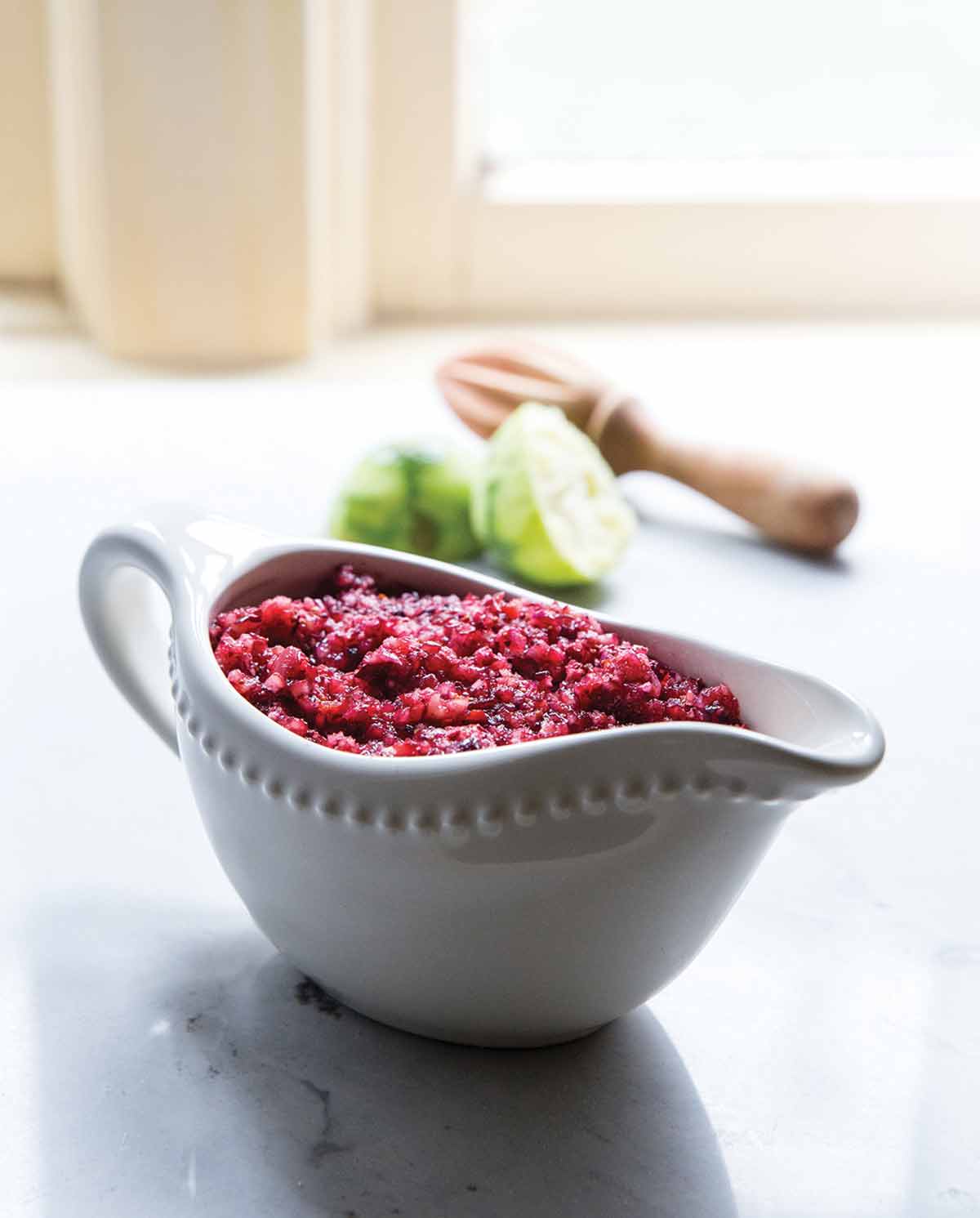
Renee: We’ve got sweet and spicy cranberry relish. We’ve got cold. We’ve got warm. I mean the great thing about cold, of course, is that you can make it ahead of time and it’s one less thing you have to do at the last minute.
David: Right.
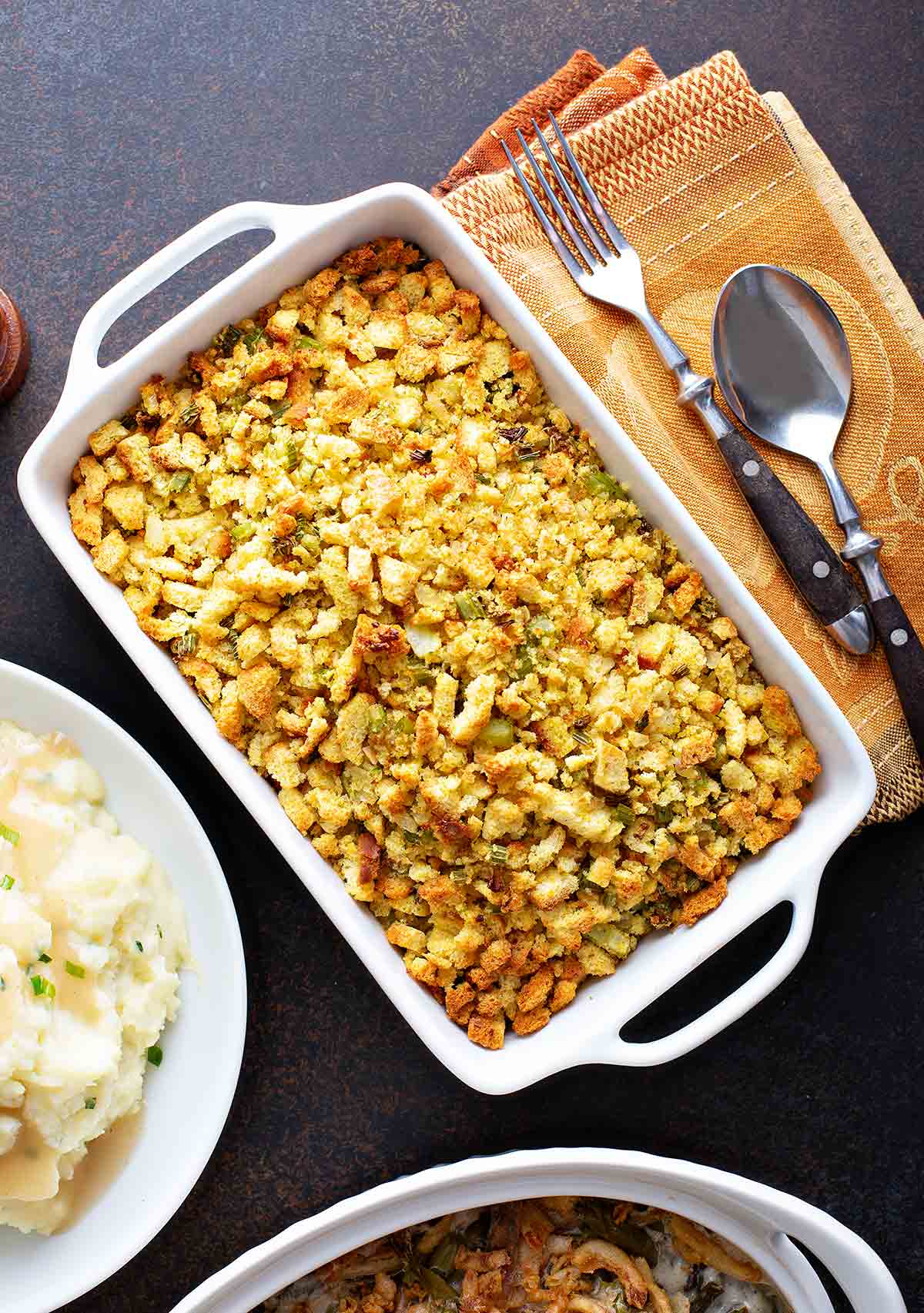
Renee: But we’ve got options, no matter what you want. We’ve got stuffing with bacon and apple. We’ve got lemony mashed potatoes. Oh my God, do we have mashed potatoes.
David: Yeah. We do have a lot of those.
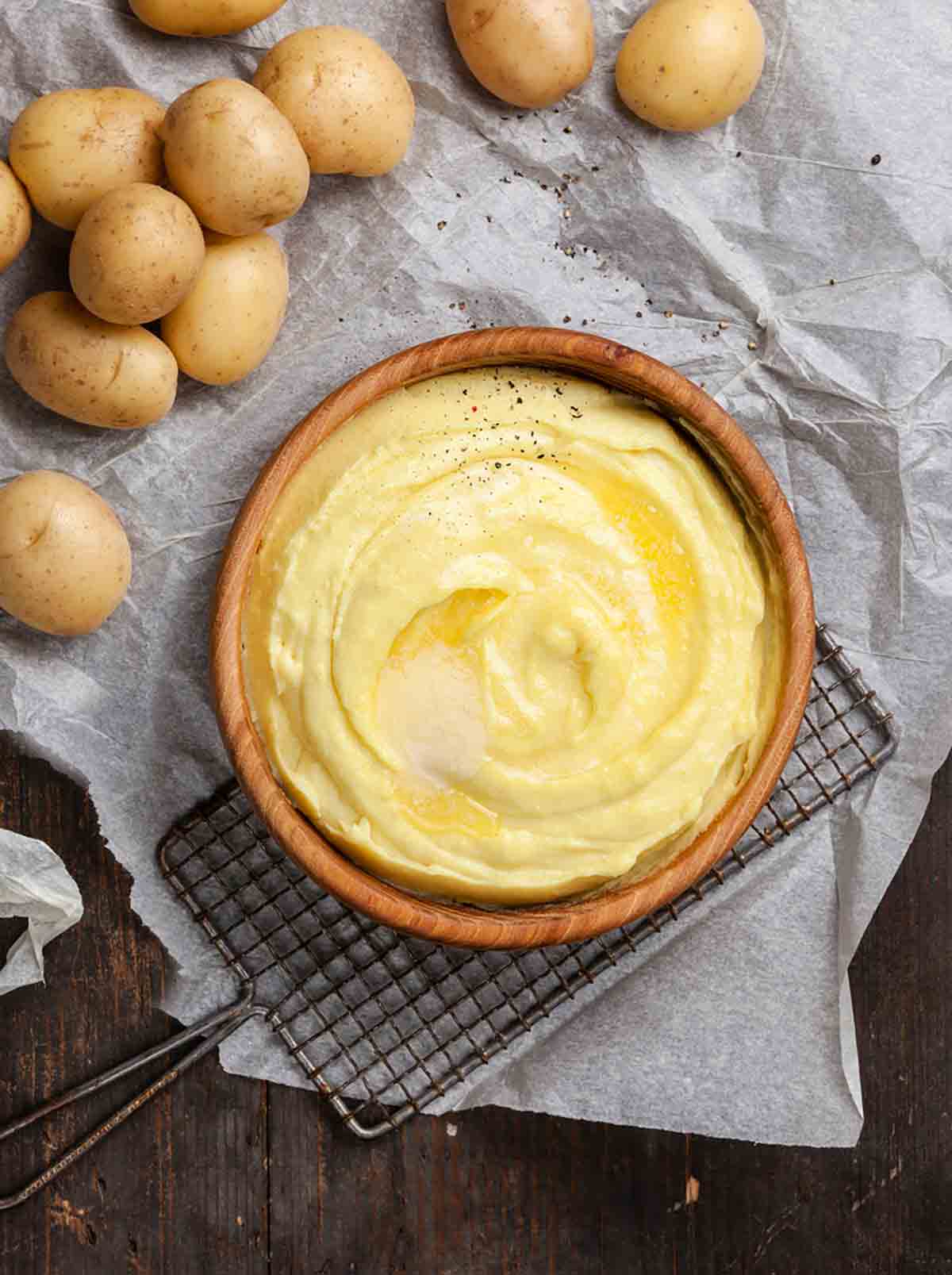
Renee: WWe’ve got the most uber, butteriest, velvety mashed potatoes you can imagine.
David: Rub all over your thighs mashed potatoes.
Renee: Exactly. Maybe you, not me. We’ve got pies. Oh, the pies. They’re just lovely. We’ve got everything to fill in–
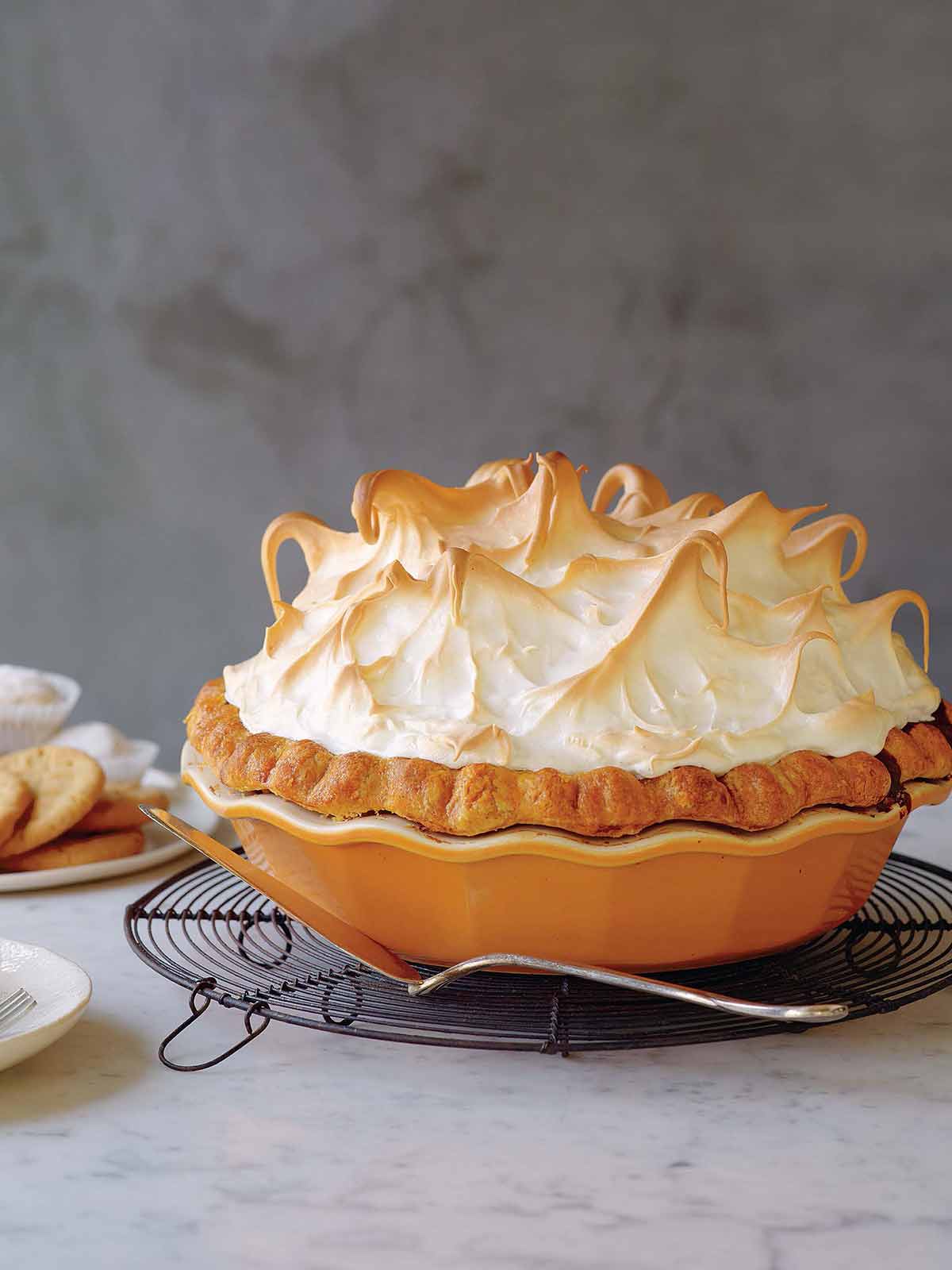
David: You’re sighing over pies. You realize that? You’re sighing over pies.
Renee: These pies are so lovely. If you’ve had the pies, you’d sigh too.
David: Well, my dear, I really want to wish you and E a marvelous and happy and delicious Thanksgiving.
Renee: Thank you, David, and the same to you and The One, darling.
David: Talking With My Mouth Full is produced by Tom Vagley with Jennifer Russell and is recorded by Paul Ruest at Argot Studios in New York City.
